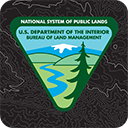Dino dentistry extracts paleo story from public land
Story by David Hercher, Public Affairs Specialist, BLM Utah
Grand Staircase-Escalante National Monument has long been a source for significant dinosaur discoveries in southern Utah.
Assisted by museum partners, selfless and dedicated volunteers, and the BLM’s very own fire aviation program, the BLM has recovered thousands of important fossil specimens from the Kaiparowits Plateau region over the last 20 years. And while the skeletons of tyrannosaurs, sea turtles, and crocodiles are all inarguably thrilling discoveries, more recently scientists from the University of Arkansas, University of Texas, and the Bureau of Land Management’s Paria River District announced a lesser-known, but equally exciting discovery — the climate and behavioral information locked inside genuine 72.5–76.6-million-year-old dinosaur tooth enamel.
Tooth enamel? Yes, tooth enamel.
On January 12, 2021, the research team published their able isotope research based on specimens from the Rainbows and Unicorns Quarry, inside the one-million-acre treasure trove of scientific opportunity that is Grand Staircase-Escalante National Monument. The paper is available online at https://doi.org/10.1144/SP507-2020-52.
Dr. Alan Titus, Paleontologist for the Bureau of Land Management’s Paria River District, said “It may not be as sexy as digging a giant T-rex out of the ground, but to the scientist trying to reconstruct the past, this is pure gold. You wouldn’t believe how hard it is to get the Oxygen and Carbon molecules inside fossil teeth and bones to tell such important stories about the deep past. You need patience, attention to detail, and a million-dollar mass spectrometer. Fortunately, the BLM’s partners at the University of Arkansas have all three.”
Images are available at https://www.flickr.com/photos/blmutah/albums.
For additional information about visitor services available at GSENM, please visit the GSENM visitor center webpage at https://www.blm.gov/learn/interpretive-centers/GSENM_VisitorCenters.
